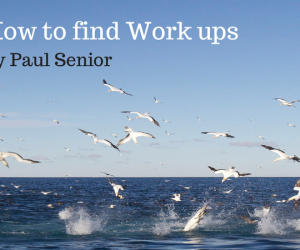Yep it can be like a disease that won’t go away.
That urge to follow gannets to work ups can be very addictive, once you have experienced being in the middle of one it may well change your life. It can be so exciting that the thought of fishing work ups can keep you awake at night. It’s that type of feeling, like being a kid again on Xmas eve, and if you strike it right it can be like all your Christmases coming at once. I for one can’t get enough of fishing around Work ups. I never get bored fishing around them and I could just watch them all day long. Every work up is different they all have their own shapes , intensity’s, fish species and one is always a bit different than the last. If you like fishing and have never experienced fishing in a work up I highly recommend you do whatever it takes to get yourself next to a work up armed with a rod with a lure dangling from the end.
The spring Work Up season has started this was caught August 19th on Blu-V Jitterbug
Although work ups can be found throughout most of the year spring and early summer leading up to Xmas is the best time to find them around Auckland. The second best time is during autumn when the water is cooling. They are can be within 10 miles of Auckland during these times. The start of the spring work up cycle is the sight of whales feeding on Plankton, often the whales are by themselves feeding and you may wonder what they’re doing as there scooping up mouthfuls of plankton which does not really attract the fish we want to catch, however pilchards feed on plankton and when you see the Whales feeding in this manner it’s fair to say the pilchards can’t be far away and once they have moved in its Boom time and the work up action will crank into full swing.

Whales feeding on plankton the first part of the spring work up cycle
It happens quickly all of a sudden the Pilchards move in and the Gulf comes alive, thousands of Dolphins, Whales, Thresher Sharks and seabirds all zone in on the tons of pilchards that populate the Hauraki Gulf. It’s a truly amazing fishery we have here in Auckland, some say it’s the best Snapper fishery in the world, I believe them. During Spring and Autumn if the weather plays ball we can just about guarantee we will find work up action, and a bin full of fish when taking clients out on one of the Blue Water fishing boats.
How to find them
The best way to find work ups is to cover ground in your boat, having a fast one helps a lot.
You will also need a pair of binoculars for finding tell tale signs of where the work ups might be. I like to get out to about 40M then switch in to search mode and start to become aware of any signs that may lead me to work ups. I will observe the seabirds and start to concentrate on my surroundings. I will look for Whale spouts, Dolphins, Birds , splashes, bait schools or anything out of the out of the ordinary. A group of boats out in the middle of nowhere can often be a dead giveaway to an area with work ups You may see a couple of Gannets fly past and then a few more, if I see this I will get my Bingos out and look in the direction that their flying to see if there heading towards any sign ahead of them

Look for Gannets and follow them to the action
When I refer to sign I am meaning, Birds , Baitfish , splashes ,anything that can signal fish including sign on the sounder in the form of marks on the screens. When looking through your Bingos you need to train your eyes and mind to look for any signs in the far off distance do not focus on the water close by ,really try to concentrate and focus as far as you can see, keep the Binos still and start to look way ahead far to the horizon .A good technique is to stare in to your Binos and start to look way in to the distance , practice this and you will soon learn how to look for signs that can be many miles in the distance. Once you can see in to the far off distance with the Binos still, start to swing around the horizon and look for any type of movement on the sea surface or up in the air. At sea surface level you want to look for any white specks which are gannets , the white specks might be grouped up not moving , which is a raft of gannets, they may appear then disappear getting lost behind a swell, so if you see anything stop swinging the binos and stare at the same spot for 30 seconds. If you see any sign in the far off distance it is really easy to lose the direction to the sign once you stop looking through the binos. To avoid this when you see the sign look for an object in the distance to line up with the spot you saw the action. This maybe a landmark in the distance, or a cloud, or a boat, or anything to give you a reference to what direction to point the bow to. It can often be easier to spot sign through the binos with some land in the background to give you a contrast which seems to make it easier to spot sign especially gannets in the air. Make sure you scan the horizon slowly, take your time and increase your chances of seeing something. You can’t do this type of intense searching through the binos, with the boat moving you need to be stopped. I brace myself against something on the boat or sit down so I really have control of my binoculars, this is a skill that must be learnt, and you will get better and better at it with practice. The trick is to look deep in to the lens focusing as far away from the boat as you can, with practice you will be able to spot a work up from many miles away. My friend Andy off the Whale watch boat is an expert at this and can often see work ups many miles away when I and others can’t, sort out this skill and you will greatly increase your chances of finding work ups. Another tell tale sign is A whale spout, these can be seen from miles away, if I see one of these I will always head in that direction and check it out, as Whales are never far away from the bait schools and work ups (as long as there not feeding on plankton).

Binoculars 7 X 50 magnification work well for spotting fish sign
If you see a mass of fast moving splashes this is excited dolphins that have used their sonar to find a bait school and are in chase mode, if you see excited Dolphins it’s because they have found a school of bait with their Sonar. Their behavior can help you find fish. They most often hang out in large schools and send of scout packs to find the bait. If you see a large group of Dolphins have a look around and you will often see the scout packs hunting in front and to the sides of the school. Remember Dolphins use sonar to find the baitfish and most of the Whales we see in the Hauraki Gulf use their hearing and eyesight to find the bait. I only use the Dolphins to help me find the work ups when there in a hunting type of mood, if there being lazy and just hanging about I don’t really take much notice of them as you can follow them for hours and hours when there not hunting. It’s very obvious when there in the mood they will be swimming fast, being quite active. I will often see them swimming in a large circle, if there doing this I reckon there is baitfish in the area so will hang out in the area for a while to see if anything happens. These circles can be large so you need to observe them for quite some time to figure out if there doing this. Remember Dolphins like to play with boats, so I try not to disturb them as you may just put them off searching for baitfish, which is counterproductive for finding work ups.
Shearwaters will often hang out on top of the baitball
When you have found the work ups some days they may be staying still and not moving much, this means the dolphins have them rounded up nicely and there holding them in a tight swirling circle, you will see the dolphins leisurely cruising around the outside of the bait ball zooming in every now and then to nail a baitfish or two, this is the best situation as you can park next to the work up and drop your lines down. Sometimes the work ups can be fast moving, which means the dolphins are chasing down the baitfish trying to round them up, this can be frustrating as by the time you get your lines down there gone. I find the best technique in this situation is to stop well ahead of where you think they’re heading and let them come to you. Keep a close eye on what’s happening because the dolphins could have the baitfish rounded up at any moment, if they do get organized and get the baitfish rounded up give them a few minutes to get organized and then you can move closer to the bait ball for a fish. When the birds are widespread and scattered this often means there are no dolphins present and its either Kingfish, Kahawai or even Snapper driving the baitfish up to the surface. In this situation I will have a look around and choose an area with the most bird action and sounder sign. Another scenario can be short lived intense work ups they last for a minute or two then die, you can find yourself driving all over the ocean trying to be there where the work up is on,, sometimes in this situation there can be a tandem work up situation. A work up will start intensely go for a few minutes then all the birds will leave and go to a second area holding baitfish have a brief work up and then come back to the first area. If you can see this happening stay in the spot where the brief work up was and hopefully they will go too there tandem work up then comes back to where they started. When the workups are short-lived and brief, you may need to move around to catch fish. Your hunting fish down, not waiting for something to happen so fish the work up until you stop catching fish then move to the next one, you may only pick up a few fish from each work up, you need to move to maximize your chances of catching. If you visualize the snapper below the work ups, travelling form one work up to another, then if you copy this behavior you should always be close to the snapper. You also need to have patience when searching down work ups, you must be prepared to cover ground and spend time looking for them. Using the birds and Mammals is key to finding work ups, pick up on what they’re doing and they will soon lead you to the action, there good at it they have to be to survive.
Work up fishing to me means fishing lures, its intense and hard on gear there is no room for tackle that breaks especially your lures, your fishing in deeper waters and you want your lure to be intact when dropping down 50M, you need to have confidence in your lure it will not break when it is hit by fish. We really don’t like using lures that break when charter fishing at Blue water fishing so keeps this in mind when you’re selecting lures and hooks. If the lures are flimsy and the hooks are not up to the job, don’t use them as you may lose that fish of a lifetime. What do we use? Jitterbugs in the 80-100g weight range simply because they work very well and don’t fall apart… The strength and durability of the products we design and import are selected for their durable nature and are well suited to fishing work ups.
Its hard to go past Jitterbugs as the best lure for fishing Work Ups.
For those of you that don’t know Paul Senior is doing Tutorial charters and more information is here







Share:
Snapper Time.
Bottom End Waiheke 24th August